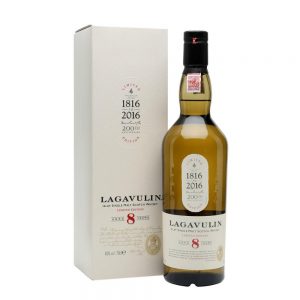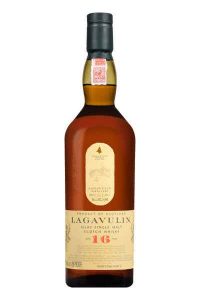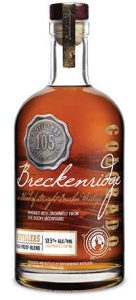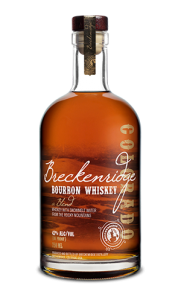From time to time, the TTB (or Alcohol and Tobacco Tax and Trade Bureau within the Department of the Treasury) proposes rule changes, and they’ll post these on-line and allow a period of public comment. I’ll be the first to admit that searching out proposed changes to government regulation isn’t what I enjoy doing with my spare time. Thankfully the fine folks at WhiskeyCast did a great summary on a recent proposed change that did catch my attention – which is the proposed change to eliminate all but the minimum and maximum standards for containers sizes for distilled spirits.
When I first discovered Scotch and gained an appreciation for this concept of ‘independent bottlers’, I was immediately energized by the possibilities. These small companies (ok, some not so small) can purchase barrels of whisky, do what they want with it (including unique finishes, etc), and bottle it – sometimes mentioning the source distillery, sometimes having to imply the source. As a consumer, it opens up a huge world of different options. If your’e unfamiliar with this concept, let me give you an example:
Let’s say your favorite single malt is Laphroaig. You’ve tried most of their lineup and have enjoyed most of what you’ve tried. In the US, you’re limited to a handful of options (10 yr, 10 yr Cask Strength, 18 yr, Lore, Select, Quarter Cask, Cairdeas and a few others). Now picture this . . . someone asks if you’ve ever wanted to try Laphroaig with a sherry cask finish? Or maybe a port cask finish? Oh – and picture that it will be non-chill filtered, natural color, and at cask strength? All of these are possibilities thanks to independent bottlers, who can take a chance on a single cask with doing something unique/different. Don’t get me wrong – these are exceptions (there are plenty of independent bottlings that are along the lines of “Laphroaig 13 yr, 46%, NCF” – although you might get that for barely more than the 10yr (as the independent bottlers don’t have the same marketing overhead, etc).
My excitement over this ‘discovery’ (as in, discover for me; this is hardly new and has been a practice in the UK for generations) was almost as quickly squashed when I learned how few of those ever make it to the United States due to our regulations regarding “standards of fill”.
Today in the United States, distilled spirits can only be packaged in specific size containers (50 mL, 100 mL, 200 mL, 375 mL, 750mL, 1 liter, and 1.75 liters). I wasn’t aware of other container sizes until touring Jim Beam many years ago and seeing the ‘quality control’ stock area which included 4.5 liter bottles (the tour guide explained that some export markets allowed larger and different sized bottles). After trying some single malt Scotch that was independently bottled and sold overseas, I was disappointed that I may never have the opportunity to try some of these gems. Why? The similar standards for the European market (and really for most if not all of the rest of the world) are different – where the ‘standard’ bottle there is 700 ml vs our 750 ml.
Why don’t they just bottle in 750 ml? I mean – they can, and some certainly do. But it is a production burden to have one size for one market. If you’re moving products through the rest of the world, why go through the trouble of buying bottles and making new labels for one market like the United States? (the answer for some is that we’re a fairly large market, and have a lot more disposable income than others)
I did write my Congressman when I learned of this injustice, and got the prompt “Thank you for your letter, your concerns are really important to me . . . ” form response letter, and just wrote this off as one of those disappointing realities. While the lifting of such restrictions would potentially be great for me as a whisk(e)y geek, I get it that these were offering some ‘protection’ to domestic producers (although it isn’t like anyone in the US can make Scotch, or anyone in Scotch can make Bourbon . . . so I never fully bought that argument – at least when it came to whisk(e)y).
“So this is awesome news, right? No downside, right?”
Well . . . not exactly. There is absolutely a risk that domestic producers like Jim Beam, Buffalo Trace, Wild Turkey, etc will decide “Good – let’s scrap these 750 mL bottles and just do everything as 700 mL without changing the prices from the 750 mL!” Let’s face it – they’re selling their products overseas, and having to have different setups for the bottle sizes, so this creates an opportunity for efficiency – and I ABSOLUTELY expect that they’ll change to 700 mL. What I don’t know is whether they will give American consumers the benefit of being good at math (in their defense, there’s a lot of evidence that we’re not so great at math collectively, or rather that we don’t apply it when purchasing whisk(e)y) and reduce their prices by the 9% of whisk(e)y they’d be shorting us if they bottle at 700 mL but still sell at the 750 mL price.
Let me be clear – this is NOT just up to the producers. There are distributors and resellers (because of some OTHER goofy regulations requiring this three-tiered system we have – another soapbox for another day) in the mix. A reseller may decide to just pocket any cost savings and not reprice a damn thing. Prices have been going up pretty much across the board when it comes to bourbon and rye; some more than others.
My thoughts? I’d prefer to have the opportunity to buy a wider variety of spirits that this change would enable. If local producers take advantage, maybe I’ll buy more Scotch and bourbon. At the end of the day, competition will address that – or it won’t. But as a lover of variety, I’m in favor of the change.
What are your thoughts? Feel free to share them in the comments. Oh – and if you are so inclined, you can submit a comment to the TTB until August 30th (here’s the link with the proposed change, and option to comment).
Cheers!
Gary





